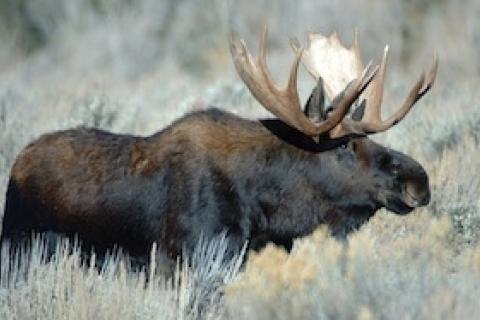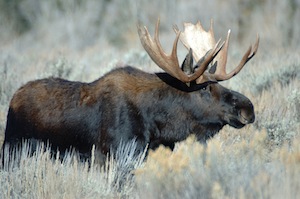
 In the world of big game hunting, bagging a moose is a great thrill.
In the world of big game hunting, bagging a moose is a great thrill.
With antler spreads that can span nearly 70 inches and body weights that can eclipse half a ton, moose—among North America’s largest game—often prove to be an enthralling, elusive hunt.
Moose are the largest of the deer family, with four sub-species that inhabit North America from the Rocky Mountains up to Alaska, as well as Canadian moose that inhabit northern and central Canada to the east coast. The Canadian moose is also the moose of Minnesota, Maine, Vermont, New Hampshire and northern Michigan. Generally, the farther north you go the bigger the moose. In some states across the U.S., the moose population appears to be declining, making the beasts even more in demand among some hunters.
Moose Hunting requires much preparation and planning as well as the necessary equipment. Here are six tips to get you started.
1. Pick your location.
In the U.S., moose are indigenous in 15 states, from Washington to Wyoming, Maine to Michigan. (Farther north, in Canada, there are an estimated 1 million moose.) In these locations, moose tend to stay close to bodies of water, such as lakes and large streams. Moose are generally solitary creatures, and a bull moose can be difficult to find when stressed during hunting season.
2. Check state hunting regulations.
As you plan your moose hunting trip, be sure to check state regulations beforehand. In Minnesota, for example, the state’s Department of Natural Resources announced that moose hunting is cancelled for the year due to a “precipitous” decline in the state’s moose population.
And if you want to hunt in states such as Maine, you’ll need to plan ahead: There’s a lottery each year, and chances of winning can be slim. This year, only a little more than 4,000 were selected to hunt out of a total of 52,000 applicants (only 10 percent of those lottery winners are out of state). For local hunters in New Hampshire, odds of winning a moose-hunting permit were 1 in 36.
3. Check aerial maps to pick your spot. Or, hire a guide.
Some states maintain aerial maps of local moose populations. Many guides coordinate planning the accommodations and equipment for you.
Local outfitters or nearby Bass Pro Shops can connect you with expert hunters familiar with the territory. One way to improve your chances for a successful hunt is hunting from an isolated moose camp.
4. Know the Season.
Moose hunting begins during August in Canada, and usually moose have their rutting season in September.
5. Pick your personal hunting gear.
Your personal hunting gear can vary by the hunt location, as well as whether you will use a guide. Prepare for a wide temperature range. In general, you’ll want to opt for supplies such as ammo, binoculars, camping gear, a compass or GPS, camo hunting clothing, hunting boots, hunter orange outerwear, moose call, rain gear and your weapon choice.
Moose hunters tend to opt for rifles ranging from .300 or 7 mm. magnums, experts say. Also, higher powered bows are a good option (think something north of a 55-lb draw, like this Bear Archery Outbreak RTH Compound bow).
6. Get in shape.
Achieving good physical condition prior to a moose hunt is one of the most important things you can do to prepare. While in the back country you’ll do a lot of hiking and climbing. Your legs, back and lungs will face heavy physical demands. Start conditioning your body with a walking regimen, running and cardio activity before the hunt.
Happy hunting!
- 4615 views

